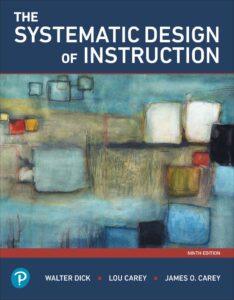By Brant Wilkerson-New
October 20, 2025
Key Takeaways
- Kemp treats instructional design as a system, not a straight line.
- Start where the need is greatest, then loop through planning, development, and evaluation.
- Use clear objectives, aligned assessments, and thoughtful strategies to keep learning focused.
- Compare Kemp with ADDIE and Dick and Carey to decide which structure fits your team and project.
- Document decisions so you can improve the learning experience after launch.
Most teams start new courses the same way every time, then wonder why outcomes feel uneven. There’s a better way to think about planning, building, and improving learning: treat the work as a flexible system, not a fixed recipe.
The Kemp design model is a holistic way to organize instructional design so nothing important slips through the cracks. It treats learning as an interconnected ecosystem, where goals, learners, content, delivery, resources, and evaluation inform each other at every stage.
Unlike rigid, linear frameworks, the Kemp model of instructional design invites you to begin where the need is most pressing. Maybe you start with learner analysis. Maybe you jump into assessment planning first. Either way, the design model keeps you grounded in a complete plan for instruction and development.
Why the Kemp approach still matters
- It’s adaptable to every format: classroom, blended, digital, performance support, and on-the-job coaching.
- It’s friendly to rapid development, continuous improvement, and Agile teams.
- It brings clarity to stakeholder conversations about goals, objectives, and measures of success.
- It scales from a single microlearning to a multi-course curriculum.
Kemp is especially strong when projects have swirling constraints. New technology. A shifting audience. Tight timelines. The model gives you a steady structure with room to move.
The core idea behind the Kemp design model
Kemp is often presented as a wheel or a set of overlapping elements rather than a staircase. That image matters. It signals that each decision affects the others.
An iterative, holistic design model
You can address any element first, then rotate through the others. If you discover a gap, circle back. Designers can make smart tradeoffs without breaking the process. That flexibility helps with complex constraints, variable budgets, and phased development.
The nine components at a glance
The Kemp design model is commonly attributed to Morrison, Ross, and Kemp, whose work shaped modern instructional design. In their text on designing effective instruction, they outline interlocking components that form a full system. The table below summarizes them.
| Component | Purpose | Typical outputs |
| Identify instructional problems and set goals | Clarify the gap and the desired state | Problem statement, business case, high-level goals |
| Examine learner characteristics and context | Understand who the learner is and where learning happens | Audience profiles, prior knowledge map, access constraints |
| Analyze content and tasks | Determine what work and knowledge matter | Task analysis, content outline, skills inventory |
| State measurable objectives | Describe what learners will do and how you’ll know | Performance-based objectives, criteria, conditions |
| Sequence content | Order the learning path for clarity and efficiency | Modules, scaffolding plan, prerequisite map |
| Design instructional strategies | Choose methods that support objectives | Practice plan, feedback map, activities and media choices |
| Plan message and delivery | Shape the narrative and modality for impact | Storyboards, scripts, UX patterns, accessibility plan |
| Develop evaluation instruments | Confirm results at multiple levels | Formative checks, summative assessments, performance metrics |
| Select resources and supports | Equip learners and instructors | Job aids, facilitator guides, LMS setup, support channels |
You’ll notice these elements support each other. Objectives guide assessment and strategies. Learner characteristics influence delivery. Sequencing affects cognitive load and motivation.
A practical walk-through using Kemp
Think of this as a loop rather than a line. You might start with evaluation planning to clarify evidence, then backfill objectives.
1. Identify problems and goals
Start by defining what’s not working and why it matters. Tie the problem to measurable goals that matter to the organization. Clear goals keep the design model anchored in outcomes.
- Identify performance gaps, not just knowledge gaps.
- Confirm the change you want to see in behavior or results.
- Decide where instruction is the right solution and where non-training fixes are needed.
2. Analyze the learner and context
Look beyond job titles. Find real patterns and constraints.
- What prior knowledge exists, and where are misconceptions common?
- What access issues limit learning time or technology?
- Which cultural or motivational factors will shape participation?
This is the moment to record learner characteristics in a way your team actually uses during development. Keep it brief, visual, and tied to decisions.
3. Analyze content and tasks
Work with subject matter experts to map tasks. Identify critical steps, common errors, and decision points.
- Break complex tasks into visible actions and cognitive moves.
- Prioritize based on risk, frequency, and business goals.
- Decide where practice should be authentic and where lightweight is fine.
4. Write measurable objectives
Objectives translate goals into observable performance. Write them so a colleague could assess the result without guessing.
- Include behavior, condition, and criterion.
- Avoid vague verbs. Replace “understand” with “diagnose,” “configure,” or “select.”
- Keep the set small and focused to protect the learning experience.
You’ll likely revisit objectives after seeing early prototypes or analytics. That is a feature, not a bug.
5. Sequence and chunk content
Sequence affects momentum. Move from simple to complex, concrete to abstract, familiar to new.
- Chunk content into modules that align to objectives.
- Build scaffolds and remove them gradually.
- Balance cognitive load with varied practice.
Careful structure supports flow, keeps attention, and reduces unnecessary friction.
6. Design strategies, practice, and feedback
Pick instructional strategies that match the objectives and the realities of your learners. This is where you outline practice plans, feedback timing, and the single set of activities you’ll need to keep learners doing, not just reading.
- Blend worked examples, reflection prompts, and scenario-based practice.
- Use immediate feedback for procedural skills and delayed feedback for complex judgment.
- Decide what must be social and what can be individual.
7. Plan message, media, and delivery
Good message design shapes how ideas land. Choose your voice, visuals, and interaction patterns intentionally.
- Favor plain language and purposeful visuals.
- Keep controls predictable across modules.
- Consider mobile, offline access, and accessibility from the start.
This step is where the learning experience gets its feel. Document patterns so multiple designers can deliver a consistent course.
8. Build in evaluation and assessment
Formulate your evaluation methods early. Decide what evidence will show that learning happened and that it mattered.
- Formative checks to steer learners midstream
- Summative assessments aligned to objectives
- On-the-job performance indicators tied to goals
Aim for at least three layers of evaluation. Quick analytics, performance data, and stakeholder feedback each tell part of the story.
9. Select resources and ongoing support
Learning rarely ends at the last screen. Equip learners and instructors with resources that extend practice.
- Job aids that reduce memory load
- Facilitator guides that standardize instruction
- Help channels for timely support
Support matters most in the weeks after launch. Plan for updates and a feedback loop.
Kemp alongside ADDIE and Dick and Carey
Instructional design has several classic models. It helps to see where each shines.
- ADDIE offers a clear sequence many teams already know. Kemp complements it by letting you enter at any point and circle back as needed.
- Dick and Carey gives deep attention to goals, objectives, and assessments as a tight chain. Kemp echoes that rigor while broadening the view to resources, message, and delivery.
- The Morrison, Ross, and Kemp framework is often a better fit when you want structure with fluidity. It supports Agile sprints, phased rollouts, and MVP learning products.
If your team prefers clear stage gates, pair ADDIE with Kemp for guardrails plus flexibility. If your projects are assessment heavy, the Dick and Carey perspective strengthens your blueprint. For complex, shifting environments, Kemp keeps your system coherent without locking you into a single route.
When to start with each Kemp element
You don’t always begin with goals. Sometimes a constraint or signal pushes a different entry point.
- Start with learner analysis when adoption is low or context is complex.
- Start with evaluation when stakeholders debate value and you need evidence first.
- Start with strategies when you have clear objectives but stale practice patterns.
- Start with resources when support gaps derail performance after training.
The point is not to follow a strict order. The point is to use the full system so design decisions stay aligned.
Practical templates you can adapt
Here are lightweight artifacts that map to Kemp and keep teams moving:
- One-page problem and goals brief
- Learner snapshot with top three characteristics and access notes
- Task analysis grid with critical steps, errors, and aids
- Objectives map linking each objective to assessments and strategies
- Sequencing outline with modules, prerequisites, and time estimates
- Prototype storyboard for a single objective and practice flow
- Evaluation plan showing formative checks, summative measures, and job metrics
- Resource list with ownership and update cadence
These templates make the model tangible without slowing development.
Common pitfalls and simple fixes
- Objectives too vague: Rewrite with behavior, condition, and criterion. Align assessment to each objective.
- Overloading content: Remove nice-to-know items and convert them to job aids or optional resources.
- Weak practice: Add realistic scenarios and clear feedback. Move beyond recall into decision making.
- Skipping evaluation: Define what success looks like before production. Collect data you will actually use.
- Ignoring context: Check access, culture, and workload. Adjust delivery and timing to fit reality.
How to use Kemp on different project sizes
- Microlearning: Pick one objective, one assessment, one practice interaction. The Kemp design model still applies at this scale.
- Single course: Work through every element, then iterate with quick analytics and learner feedback after launch.
- Curriculum: Treat Kemp as your meta-structure. Apply each component across modules, then again within each module.
Even small projects benefit when you apply a consistent design model. It keeps the team aligned and speeds up development over time.
Connecting Kemp with other instructional design models
Many teams blend models. A practical combination looks like this:
- Use ADDIE to set high-level phases for stakeholders.
- Apply the Kemp model inside each phase for day-to-day work.
- Borrow the Dick and Carey tight alignment for goals, objectives, and assessments.
This blended approach supports clear communication while preserving the agility designers need to respond to real-world constraints.
FAQ: Short answers to common questions
- Is Kemp only for eLearning? No. It works across classroom, virtual, blended, and performance support.
- Can I start with evaluation? Yes. Kemp encourages entering at any component.
- How do I keep the team aligned? Use a shared objectives map and keep decisions visible.
- What about designing for change? Iterate. Treat the model as a loop and version your artifacts.
Word choices that matter
A few terms in Kemp deserve extra attention:
- Objectives: Commit to verbs that describe observable behavior.
- Assessment: Plan how you will measure progress during and after learning.
- Evaluation: Look beyond quizzes to performance indicators on the job.
- Strategies: Choose methods that serve the objectives rather than default formats.
- Goals: Tie design decisions back to meaningful outcomes for the organization and the learner.
Language drives clarity. Clarity drives results.
Where the Kemp design model excels
Three strengths come up again and again:
- A system you can enter anywhere without losing coherence
- An emphasis on measurable objectives and aligned assessment
- A practical focus on resources, delivery, and ongoing support
These strengths make Kemp a favorite among designers who want rigor without rigidity.
A quick recap you can share with your team
- Kemp is a holistic, iterative instructional design model.
- It organizes nine interconnected components that you can address in any order.
- Clear objectives, aligned assessments, and thoughtful strategies keep learning on track.
- The model pairs well with ADDIE and Dick and Carey when you need more formal stage gates or deeper assessment alignment.
- Use lightweight artifacts to move fast without sacrificing quality
Need help turning your SOPs and work instructions into effective training materials? Our instructional design services transform complex processes into engaging, easy-to-follow learning experiences. Contact us today to improve training and performance!
- About the Author
- Latest Posts
I’m a storyteller!
Exactly how I’ve told stories has changed through the years, going from writing college basketball analysis in the pages of a newspaper to now, telling the stories of the people of TimelyText. Nowadays, that means helping a talented technical writer land a new gig by laying out their skills, or even a quick blog post about a neat project one of our instructional designers is finishing in pharma.





